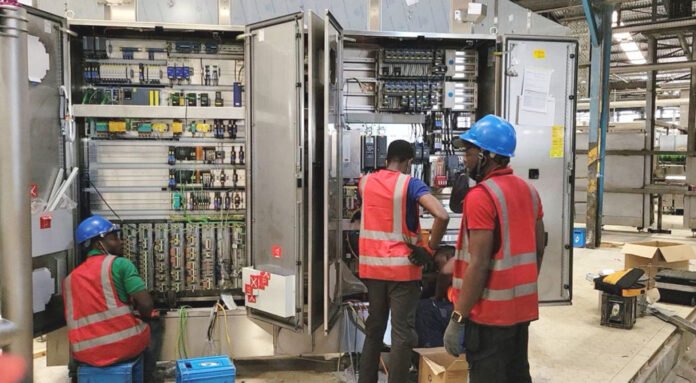Commissioning electrical panels is a critical step in ensuring that your electrical systems operate efficiently and safely. Proper commissioning not only verifies that the installation meets design specifications but also helps identify and rectify potential issues before they become significant problems. This guide will walk you through the best practices for optimal performance in electrical panel commissioning, integrating essential steps and considerations.
Understanding Electrical Panel Commissioning
Electrical Panel Commissioning is a systematic process that ensures all components of an electrical panel are designed, installed, tested, operated, and maintained according to the operational requirements of the facility. This process is essential for new installations as well as upgrades or modifications to existing systems.
Importance of Electrical Panel Commissioning
Commissioning electrical panels is crucial for several reasons:
- Safety Assurance: Proper commissioning ensures that all safety protocols are followed, reducing the risk of electrical hazards.
- Performance Verification: It verifies that the panel and its components operate as intended, meeting design and performance specifications.
- Compliance: Ensures adherence to industry standards and regulatory requirements.
- Longevity: Helps in extending the lifespan of the electrical components by identifying and mitigating potential issues early on.
Best Practices for Electrical Panel Commissioning
1. Pre-Commissioning Preparation
Before starting the commissioning process, thorough preparation is vital. This includes:
- Reviewing Design Documents: Ensure that all design documents are complete and up-to-date. This includes electrical schematics, wiring diagrams, and equipment specifications.
- Inspecting Equipment: Conduct a detailed inspection of all equipment and materials to ensure they meet the required standards and specifications.
- Safety Planning: Develop a comprehensive safety plan that includes emergency procedures and safety measures to protect personnel during the commissioning process.
2. Initial Visual Inspection
A thorough visual inspection of the electrical panel and its components is essential. This step involves:
- Checking for any physical damage or defects in the panel and its components.
- Ensuring all connections are secure and that there are no loose wires or terminals.
- Verifying that all labels and markings are clear and accurate.
3. Functional Testing
Functional testing involves verifying the operation of the panel and its components. This includes:
- Continuity Testing: Checking the continuity of all electrical circuits to ensure there are no open circuits.
- Insulation Resistance Testing: Measuring the insulation resistance to ensure that the electrical insulation is intact and effective.
- Operational Testing: Verifying that all switches, relays, and other control devices operate correctly.
4. Load Testing
Load testing is crucial to ensure that the electrical panel can handle the expected load without issues. This involves:
- Applying a simulated load to the panel and monitoring its performance.
- Checking for any signs of overheating, voltage drops, or other issues during the load test.
- Ensuring that all protective devices, such as circuit breakers and fuses, operate correctly under load conditions.
5. Documentation and Reporting
Proper documentation is a critical aspect of the commissioning process. This includes:
- Recording Test Results: Documenting all test results and observations during the commissioning process.
- Creating a Commissioning Report: Compiling a comprehensive report that includes all test results, observations, and any corrective actions taken.
- Maintaining Records: Keeping detailed records of all commissioning activities for future reference and compliance purposes.
6. Final Inspection and Handover
The final inspection and handover involve a thorough review of the entire commissioning process. This includes:
- Conducting a final inspection to ensure that all issues identified during the commissioning process have been addressed.
- Verifying that the electrical panel is ready for operation and meets all performance and safety standards.
- Handover to the facility’s operations team with all necessary documentation and training.
Conclusion
Commissioning electrical panels is a complex but essential process that ensures the safety, reliability, and optimal performance of electrical systems. By following these best practices, you can ensure that your electrical panel commissioning process is thorough, efficient, and compliant with industry standards. Remember, the goal is not only to verify the installation but also to ensure long-term reliability and safety. For more detailed information on Electrical Panel Commissioning, visit Manikaran’s Panel Installation, Testing, and Commissioning Service.
By adhering to these best practices and maintaining meticulous documentation, you can achieve optimal performance and longevity for your electrical panels, ensuring the safety and efficiency of your electrical systems.



